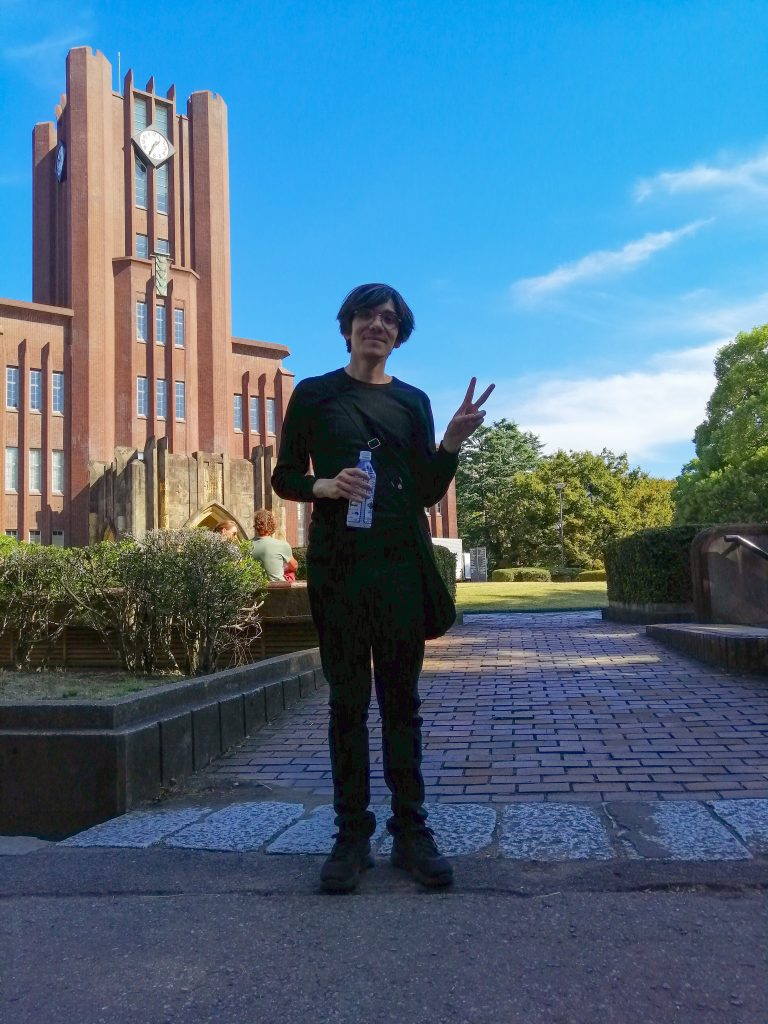Felipe Guzmán, a member of Optolab and a Ph.D. candidate in Electrical Engineering at the Electrical Engineering School at PUCV, completed a research internship in Japan.
From October 2023 to February 2024, he was in the Asian country, working at the Information Sciences Laboratory at the University of Tokyo, alongside Professor Ryoichi Horisaki.
Felipe specializes in the field of Computational Imaging, which broadly involves capturing information and forming images computationally. He specifically focuses on compressive video formation, meaning, recovering videos from a single snapshot.

“Professor Horisaki’s expertise lies in how to form images through turbid or chaotic media, such as skin”, Felipe explains. Consequently, they combined both concepts resulting in a new research theme: How to form a video through turbid media.
We asked him about how the opportunity arose and his impression of Japanese culture in the following interview.
How did you end up going and what motivated you?
Professor Esteban Vera knew Professor Ryoichi Horisaki, and some time ago, he extended an invitation for us to visit his laboratory, and I volunteered. With the internship opportunity, I contacted him, and we coordinated for me to go there.
I am interested in his research area, which involves forming images through chaotic means, such as skin or the atmosphere. It’s a significant challenge; I wanted to know how he did it and apply my ideas.
Does it relate to your previous research topic?
It’s related because it falls under the same topic called Computational Imaging. So, they stem from the same idea, “I capture information and form images on the computer”.
What were you working on during the internship then?
Professor Horisaki’s expertise is in forming images through turbid or chaotic means, such as skin, and the area I specialize in is compressive video formation, i.e., how to obtain a video by measuring one image.
So, we combined these concepts, and now it’s “how to form a video through turbid media”. He hadn’t explored the area of video before, only images.
Were you able to make progress on the research topic?
We planned as soon as I arrived, but since forming a video in the way we did had never been attempted before, the idea is complex still.
Usually, to form a video image, you need many images, but we set the limitation that we would form a video from a single image, which is a strong constraint. Throughout the internship, we focused on achieving that goal, obtaining a video. So, there’s a lot to do still in collaboration with him.

And how was living in Japan, did you like it?
I loved it. Japan is a new culture, it has its advantages and disadvantages like all countries, but I would say the most important thing is that my way of living life adapted quite well to Japan.
I am a calm person, and in Japan, people are calm, so in that sense, I felt very comfortable and eager to return.
Was there much difference from your previous internship in the United States?
Of course, culturally, Americans are more direct, while Japanese are more subtle. Also, American culture is very much about long distances, so being a pedestrian feels very strange in the United States; everyone drives their cars, and you don’t see anyone walking.
In Japan, on the other hand, everyone walks. It’s very common to use the train, the rich use the train as much as the poor, and everyone walks everywhere. The cities are always crowded with people, it feels like a crowd, and you always feel that way.
What is the daily functioning of the laboratory like?
In the United States, I would say the dynamics are more similar to here, with a lot of conversation. In Japan, it’s structured and silent; each person works on their task, and occasionally there are conversations or meetings, but the work is more individual.
I relied on a guy who helped me take the first steps in terms of how to make images in turbid media, but from then on, it was work that I only answered to Professor Horisaki.
Looking forward to returning and continuing to collaborate, Felipe concluded his internship in Japan. For more photos, check out our Instagram post.
